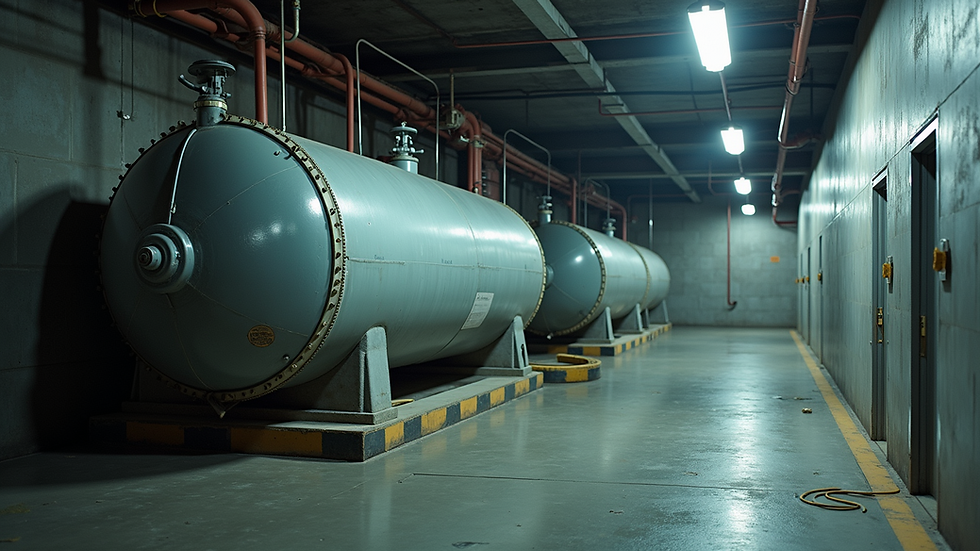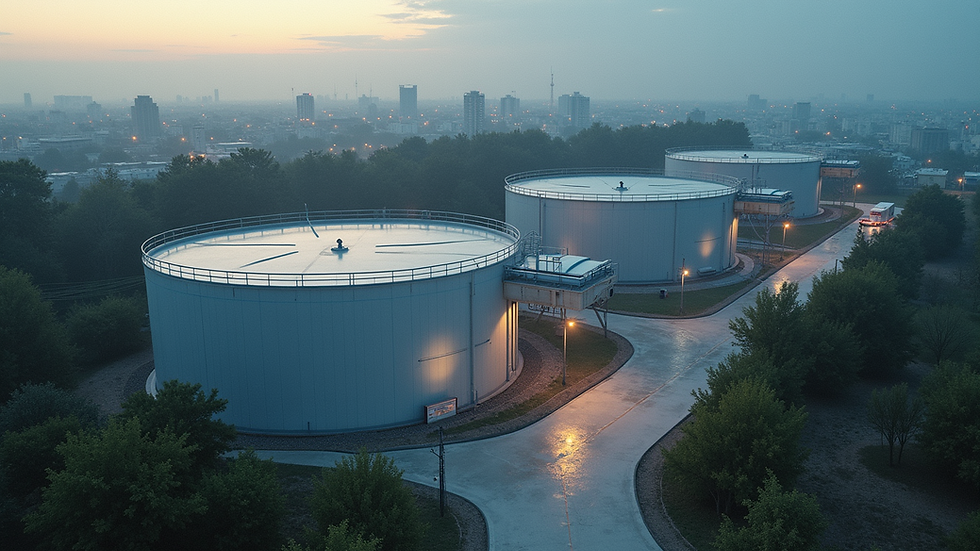Unveiling the Crucial Role of Underground Petroleum Tanks in Highrise Building Infrastructure
- Wolfpack Environmental Solutions

- Aug 15
- 3 min read
In today’s expanding urban landscape, highrise buildings symbolize innovation and growth. As cities climb higher, the infrastructure that supports them must also adapt. One essential part of this system that deserves attention is the underground petroleum tank. In this post, we will explore the vital functions of these tanks, their relevance to highrise buildings, and the safety measures that are necessary for their use.
Understanding Underground Petroleum Tanks
Underground petroleum tanks store fuel, which is mainly used for heating or emergency power generation. These tanks are buried beneath the ground, often in the basements of highrise buildings, to conserve space and minimize fire risks that above-ground storage may present.
For instance, a typical underground tank might hold around 1,000 gallons of fuel. This capacity is critical in highrise buildings, where energy demands can spike due to elevators, HVAC systems, and lighting. During emergencies—like power outages—having a dedicated fuel supply can ensure that these essential systems continue to function, maintaining safety and comfort for residents.

The Importance of Fuel Supply in Highrise Buildings
Highrise buildings typically rely on a blend of electricity and fuel for energy. An underground petroleum tank serves as a backup in case of power failures. For example, in a 30-story building, losing power can disrupt elevators and emergency lights, creating major safety hazards. In 2021, the U.S. experienced nearly 3,000 electricity outages lasting more than five hours. Having fuel on hand ensures that essential services remain operational during such events.
Moreover, these tanks facilitate efficient energy management. By tracking fuel levels and usage, building managers can ensure the supply meets the building's demands. This approach not only caters to current needs but also helps avoid unexpected fuel shortages, which can lead to inconvenience and added stress for residents and management alike.
Safety Considerations for Underground Petroleum Tanks
While underground petroleum tanks offer numerous benefits, safety is a major concern. Proper installation and ongoing maintenance are vital to prevent leaks. Annual inspections by certified professionals are crucial. In a survey by the National Fire Protection Association, 92% of leaks in underground tanks occur due to improper maintenance.
Highrise buildings should also install safety features like spill containment systems and leak detection technology. These systems typically utilize sensors and alarms to quickly identify and address potential issues, minimizing the chance of contamination to surrounding areas and ensuring the safety of occupants.

Environmental Impact and Regulations
The environmental effects of underground petroleum tanks are serious. A leak can contaminate soil and groundwater, endangering public health. According to the U.S. Environmental Protection Agency, over 20,000 groundwater sites are contaminated due to leaked petroleum from tanks.
To combat these risks, there are stringent regulations surrounding the installation, maintenance, and decommissioning of underground petroleum tanks. Owners must comply with both local and federal guidelines, which often stipulate regular monitoring and reporting of tank conditions. By following these laws, highrise buildings can lower their environmental footprint and support sustainable urban growth.
Innovations in Underground Tank Technology
Recent technological advancements have improved the efficiency and safety of underground petroleum tanks. Many modern tanks are made from corrosion-resistant materials and feature sophisticated monitoring systems. A study by the American Petroleum Institute showed that new monitoring technologies can reduce leak incidents by over 75%.
Additionally, integrating smart technology enables real-time monitoring of fuel levels and tank integrity. This data-centric approach allows for timely decisions regarding fuel usage and upkeep, enhancing the building's energy management system.

Final Thoughts
Underground petroleum tanks are essential to the infrastructure of highrise buildings. They provide a necessary fuel source, improve energy management, and ensure safety during emergencies. As urban areas continue to expand, the role of these tanks becomes increasingly significant, calling for ongoing innovation and attention to safety standards.
By recognizing the functions and importance of underground petroleum tanks, building owners and managers can make decisions that enhance the safety and sustainability of their structures. As we look to the future, it is vital to prioritize advanced technologies and safety measures to ensure these critical components serve their purpose effectively and efficiently.
Contact info@wolfpackenvironmentalsolutions.com for CERS assistance.


Comments